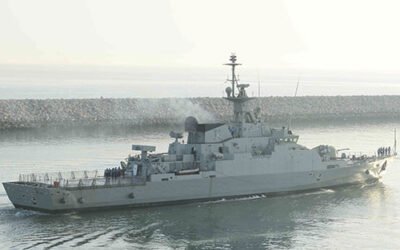Following heavy rainfall or snowmelt, a wadi may become inundated with water, transforming into a flooded wadi and significantly heightening the potential dangers. Typically located in arid landscapes, these water channels can rapidly fill up, leading to flash floods that endanger lives and property. To prioritize your safety in such settings, here are the reasons why driving in a flooded wadi can be hazardous:
1. Flash Floods:
One of the most significant dangers of driving in a wadi is the risk of encountering flash floods. Wadis are susceptible to sudden and intense flooding during heavy rain or flash flood events. What was once a dry riverbed can swiftly transform into a fast-flowing torrent of water, trapping unsuspecting drivers in its path. The ferocity and unpredictability of flash floods make them a serious threat to anyone driving in a wadi.
2. Unstable Terrain:
Navigating the rocky and uneven terrain of a wadi can present a challenge even to experienced drivers. The rugged landscape of wadis can lead to vehicles getting stuck or sustaining damage due to the rough conditions. Inexperienced drivers may find it particularly difficult to maneuver through the obstacles present in wadis, increasing the likelihood of accidents or breakdowns.
3. Limited Visibility:
The narrow passages and steep walls often found in wadis can severely limit visibility for drivers. Poor visibility makes it challenging to anticipate potential hazards or oncoming vehicles, heightening the risk of collisions or other accidents. When multiple vehicles are navigating the same wadi simultaneously, the lack of visibility can create a dangerous scenario where drivers may struggle to avoid collisions.
4. Remote Location:
Many wadis are located in remote and isolated areas, far from populated areas or assistance. In the event of an emergency or accident while driving in a wadi, help may be difficult to access quickly. Being stranded in a remote wadi with limited supplies or communication can pose a serious threat to the safety and well-being of drivers and passengers.
5. Submersion:
Cars are not designed to float or drive on water. When a car is driven onto a pond or body of water, it will quickly sink due to the weight of the vehicle. Once submerged, it can be difficult for passengers to escape from the vehicle, especially if the windows and doors become submerged and cannot be opened.
6. Electrical Hazards:
When a car is submerged in water, there is a risk of electrical systems short-circuiting. This can lead to a variety of dangerous situations, such as the deployment of airbags, loss of power steering, or even fires caused by electrical malfunctions.
7. Water Damage:
Even if the occupants are able to escape from a submerged vehicle, the car will likely suffer extensive water damage. Water can infiltrate the engine, transmission, and other vital components, causing them to fail. Repairing water-damaged vehicles can be costly and may not always be feasible.
8. Environmental Impact:
Driving a car on a pond can also have negative environmental impacts, such as oil and fuel leakage, which can contaminate the water and harm local ecosystems. Additionally, the presence of vehicles in wadis can disrupt natural habitats and contribute to soil erosion, further damaging the delicate balance of the ecosystem.
In summary, crossing wadis in a manner that endangers lives is strictly prohibited by Omani law. Article 49/8 outlines that individuals who knowingly attempt such dangerous crossings can face penalties of up to three months in jail or a fine of OMR500. This legal provision aims to discourage risky driving behaviors and uphold the safety of both drivers and passengers on the roads.




